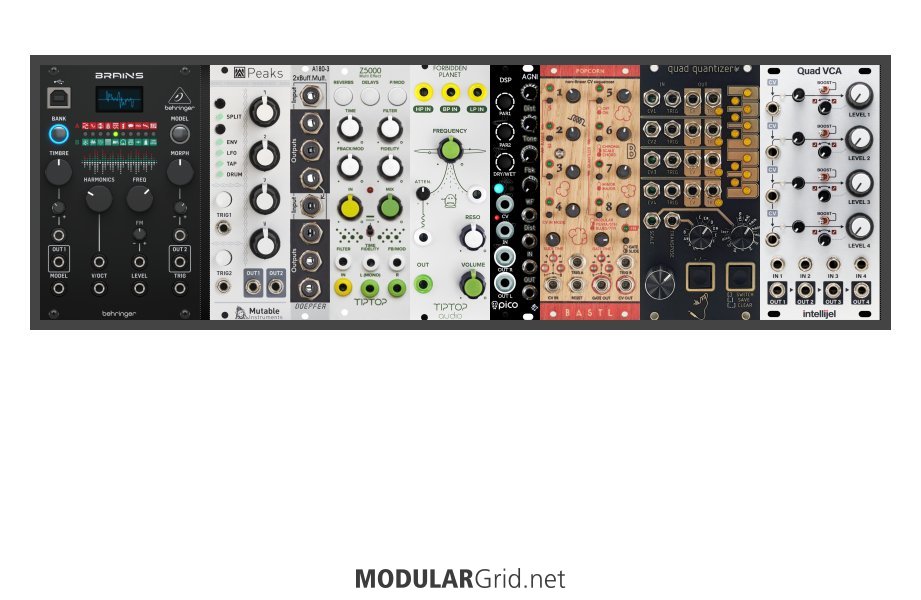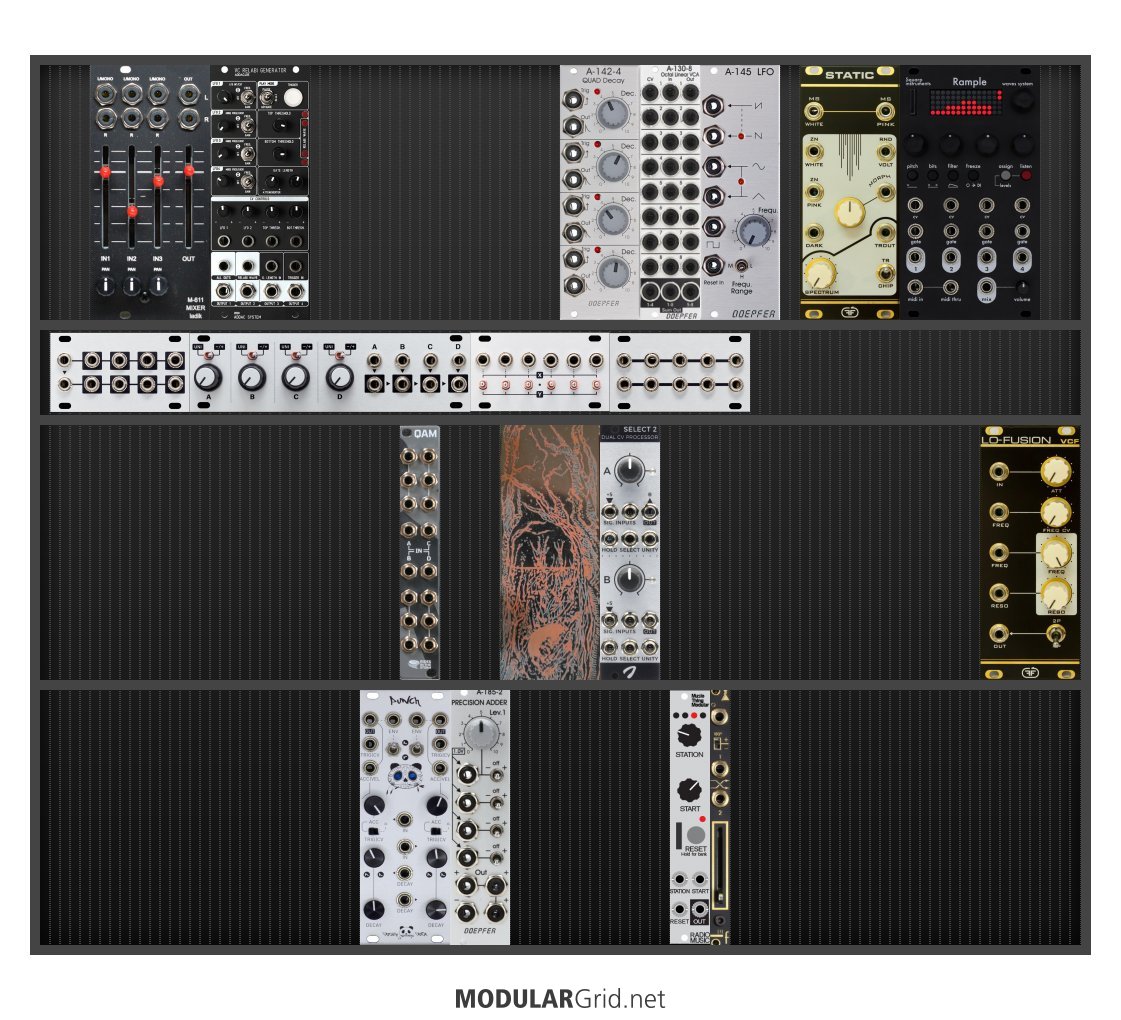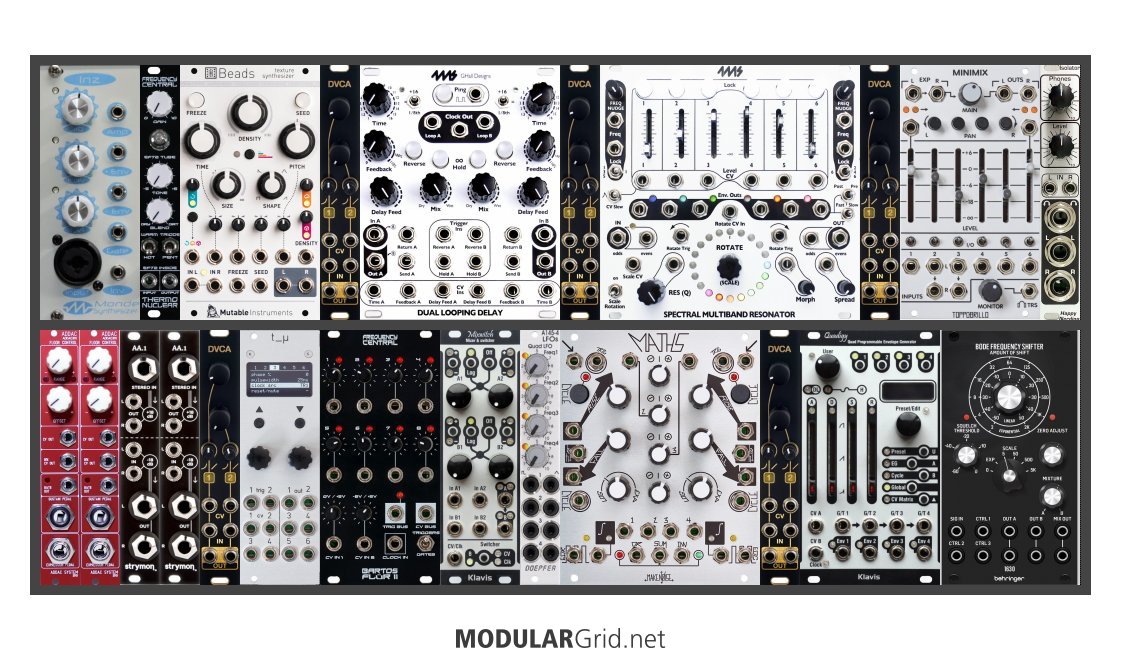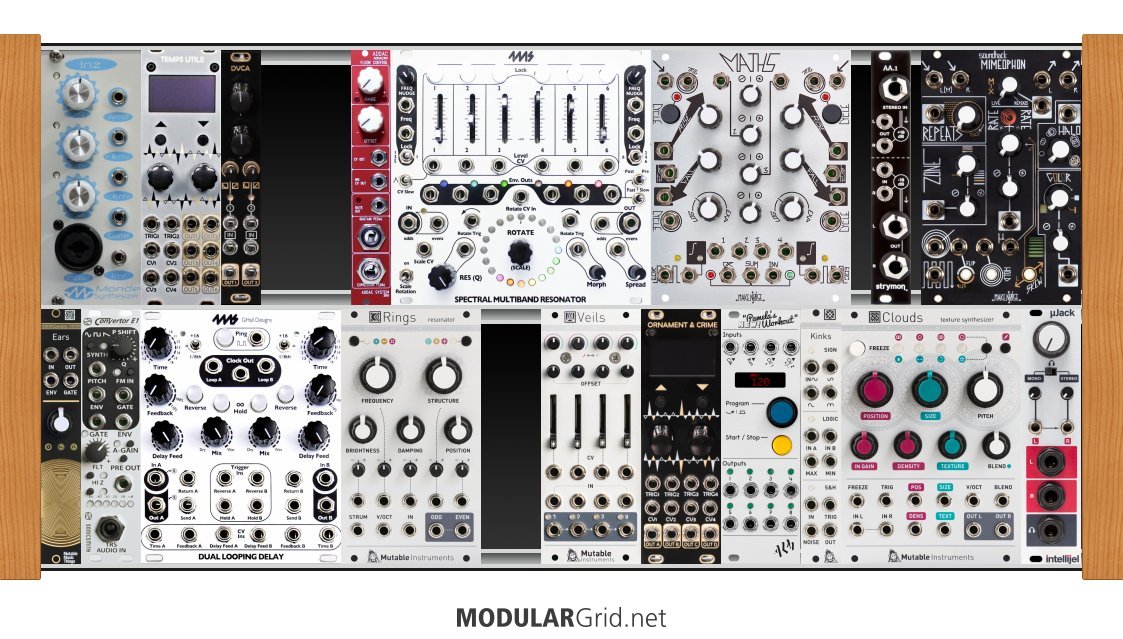It is very cool. I just had my first play around with it - with its 8x16 grid, it's a very visual way of working, which I like. It's a bit like the Deluge, but sequencer only. And it's tiny! The entire box it shipped in, containing the Oxi One, a carrying case, cables, and a module to connect modular with a single cable, fits into my BSP case!
that's great - sometimes bigger is better, and sometimes the opposite
Well, coming from the Argon8x and having the wavetable mode in Plaits, I know there can also be a big difference between VCOs. The Argon has these incredible wavetables where you just go back and forth through the table and you've got an instant classic. But I see what you mean. I have doubted my Feedback Lo-Fusion for a while, but I really started liking its instant old-school warm grungy sound. That's character. Do you have the same feeling about effects, e.g. different reverbs/delays?
yeah I think there's a lot of character in effects... there can be both subtle and massive differences in almost all of them... probably why I have so many!
That's a good point. And the Lion is TRS, too, which I understand for send/return, but that means it requires dedicated cables. Something standard has its advantages.
yeah and it's trs to dual ts cables you need and no control other than where you plug the cables in...
Ugh.
exactly!
Not looking forward to telling my wife I'll be adding a second case... It's not like she's not supportive - she likes that I'm making music. It's just me being very uncertain about spending money again on it. I also like the idea of having a portable system for performances - which will be new for me but I'm starting talks. One Intellijel 7U + Oxi + iPad is eminently portable. Add a second 7U and it becomes far less so. Or that's how it seems to me now. If you'd told me I'd be lugging around a 7U + BSP + bag full of cables/PSUs + laptop bag with iPad and macbook pro to workshops every week... "Add a second 7U" is a meaningless delta when you're already dragging Google's data center around
-- Arrandan
well it all seems easily portable in a rucksack and 2 cases... so ok on public transport!! another option of course is buy a massive case for home and swap what you need into a single case for a gig...
I hope your wife is understanding...
"some of the best base-level info to remember can be found in Jim's sigfile" @Lugia
Utility modules are the dull polish that makes the shiny modules actually shine!!!
sound sources < sound modifiers < modulation sources < utilities







